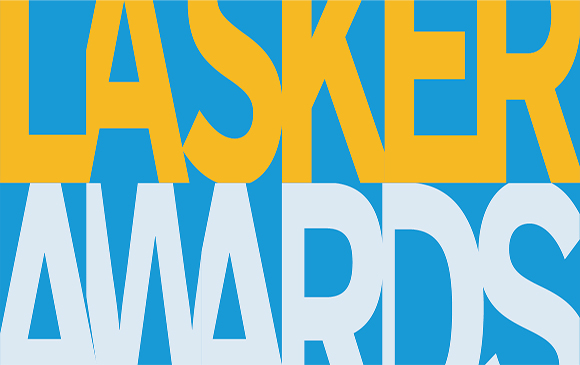In the late 1960s, Mary-Claire King was struggling with failed experiments during the early years of her PhD at the University of California, Berkeley (UC Berkeley), and was on the brink of leaving school. She had received an attractive job offer — to work with Ralph Nader’s new organization in Washington, DC, to lend the perspective of a biologist to social justice causes.
Good advice kept King in science and on a path in genetics that would include discovering BRCA1, a gene that underlies the risk of inherited breast cancer, and developing genetic approaches to reunite missing people or their remains with families, for both of which she received the 2014 Lasker~Koshland Award for Special Achievement in Medical Science and the National Medal of Science in 2016, among many other awards.
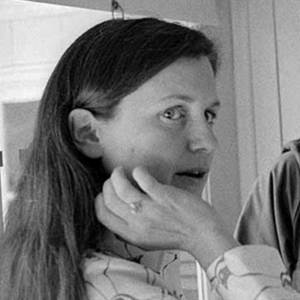
King in 1979
King stayed in graduate school thanks to the encouragement of Allan Wilson, a father of molecular evolution, a winner of one of the first MacArthur Awards, and ultimately her PhD mentor. Wilson encouraged her not to abandon experimental biology but to also use her training in math, a subject that she enjoyed from a young age and majored in at college. He suggested that they plan experiments that should be relatively simple but that would yield data that could be interpreted, as he put it, with her “ability to write equations.” The combination turned out to be the key to success. Now when King advises grad students, she strongly encourages them to meld biology with quantitative sciences.
The convoluted route to her PhD was one of the challenges that King has navigated in a scientific journey that is paradoxically both remarkable and typical for a woman in science. She embarked on a decades-long odyssey to determine whether there was an inherited genetic basis for breast cancer at a time when this idea was nowhere on the scientific horizon. She conducted most of the 17 years of research to discover that genetic basis as a single mother. And she very nearly did not have an independent lab at all.
Fundamental Lessons
Growing up in suburban Chicago in the 1950s, King had never heard of scientific research as a career. She did, however, have early and fun exposure to math, because her dad loved to make up story problems. King and her younger brother spent many days with him, watching Cubs and White Sox games and pondering the math puzzles he invented for them about the players and their stats. “It was a double win,” King says. Later in high school, two exceptional female math teachers, one of whom had a PhD, gave King a vision of what her own career might look like.
After majoring in math as an undergraduate at Carleton College, King moved to UC Berkeley to study statistics. Her advisor suggested that she take the genetics course taught by the legendary Curt Stern, the last time he offered the course before his retirement. King was enchanted, as she explains now, more than 50 years later:
“Genetics combined problem-solving, math, and fascinating biology. It offered an opportunity to tackle problems that were both intellectually stimulating and important to people. It was irresistible.”
Not unexpectedly, switching from statistics to genetics presented some problems. Although King was not intimidated by the math, she doubted her ability to carry out experiments well. But as King puts it now, eventually she learned. The research project she and Wilson designed revealed that humans and chimpanzees are 99% identical in the sequences of protein-coding genes, at the time a revolutionary idea, and led to their formulation of the regulatory hypothesis of human evolution that has been a central paradigm of the field. Working with controversial ideas in the Wilson lab also left an imprint beyond her PhD research project. “I learned from Allan to be very critical of my own data, to ask my friends to be very critical of it, and to speak and publish only when I was absolutely convinced of the evidence. But once I went public, to present a full story with complete confidence.”
A Coup, Two Wars, and a Quest
After finishing her PhD in the early 1970s, King and her then-husband, ecologist Robert Colwell, moved to Chile to teach in the University of California — Universidad de Chile exchange program. Their time was cut short by the violent coup that over threw the elected government of Salvador Allende. King and Colwell tried to protect their students — an effort that for some was in vain — and returned to California in late 1973.
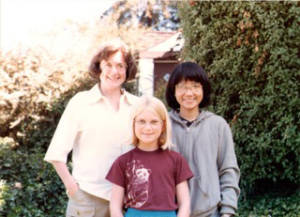
King, her daughter Emily (age 9), and her graduate student KaSing Yeung (1984)
Back in the United States, President Nixon had declared the War on Cancer, and there were ample job opportunities in cancer research. Nicholas Petrakis, an oncologist at University of California, San Francisco, hired King to explore the role of inherited genetics in breast cancer, taking whatever approach she thought best. King reasoned that the approaches she had used to study human evolution could be applied to genetic changes on a much shorter timeframe, a few generations in a family. She started reading about breast cancer and thinking about family studies. In a way, King says now, her motivation for cancer research had been planted years earlier when she lost her best childhood friend to a never fully diagnosed cancer.
King’s report in 1990 of a gene responsible for extremely high inherited risk of breast cancer shook the world of cancer research, but the 17 years leading up to it were relatively unnoticed. King was quiet about her work. Mainstream thinking about breast cancer did not then include inherited susceptibility to the disease. She embraced Allan Wilson’s philosophy of speaking or publishing only after one’s evidence is rock solid. “It’s okay to go to a meeting and not give a talk,” King says.
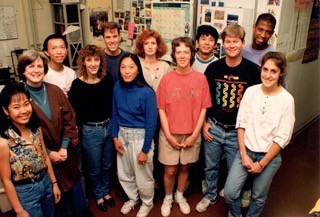
King in the early 1990s with members of her UC Berkeley lab; in 1990, the group discovered a region of chromosome 17 linked to breast cancer in severely affected families.
Being a young woman also, oddly, played to King’s advantage. “No one noticed me,” she says. But senior colleagues whom she approached individually were crucially helpful. Staff at the National Cancer Institute (NCI) added her questions about family history of cancer to their large survey of cancer and oral contraceptive use. The family histories of 1500 women with breast cancer allowed King to develop a mathematical model that predicted that a still-hypothetical gene could be responsible for early onset breast cancer in some families. But a model was not a proof. The proof of a gene’s existence was to find it, a project, King notes, that today would be a rotation project for one graduate student. In the 1980s, however, the Human Genome Project was not yet underway, and there was no human genome sequence. Instead, with the help of breast surgeons and oncologists, King obtained DNA from patients with breast cancer and their unaffected relatives. She and her small team used linkage analysis to test hundreds of markers, one at a time, that they and others identified. Eventually, they found a marker on chromosome 17q21 that was consistently co-inherited with breast cancer in severely affected families with early onset disease.

In 1993, during the quest to clone the BRCA1 gene, King and researchers in her lab, Lori Friedman (left) and Sarah Rowell (center), read manually-obtained DNA sequences from families affected by breast and ovarian cancer in order to identify mutations responsible for the disease.
When King published her results in late 1990, they were indeed convincing and immediately replicated with the markers she distributed. Multiple large research groups — at universities, in government, and in industry — embarked on the quest to clone the culprit gene in this chromosomal region. The media dubbed the competition “The Race.” The gene was ultimately cloned in 1994 by the biotechnology firm Myriad Genetics, whose resources dwarfed those of King’s lab. Soon after, Myriad obtained a patent on BRCA1 and its sister gene BRCA2 and severely restricted the ability of other groups to carry out genetic testing of patients. Almost 20 years later, in 2013, the Supreme Court ruled unanimously that human genes are products of nature and cannot be patented. King celebrates that decision, which immediately opened competition in testing platforms, with costs of testing dropping almost immediately by more than 90%. But she is dismayed at how many women were unable to pay for testing during the years of the monopoly; many were left unaware of their extremely high risks of breast and ovarian cancer until their cancers were diagnosed.
As King was quietly looking for a breast cancer gene, she was already gaining international recognition for a project that epitomizes genetics in public service.
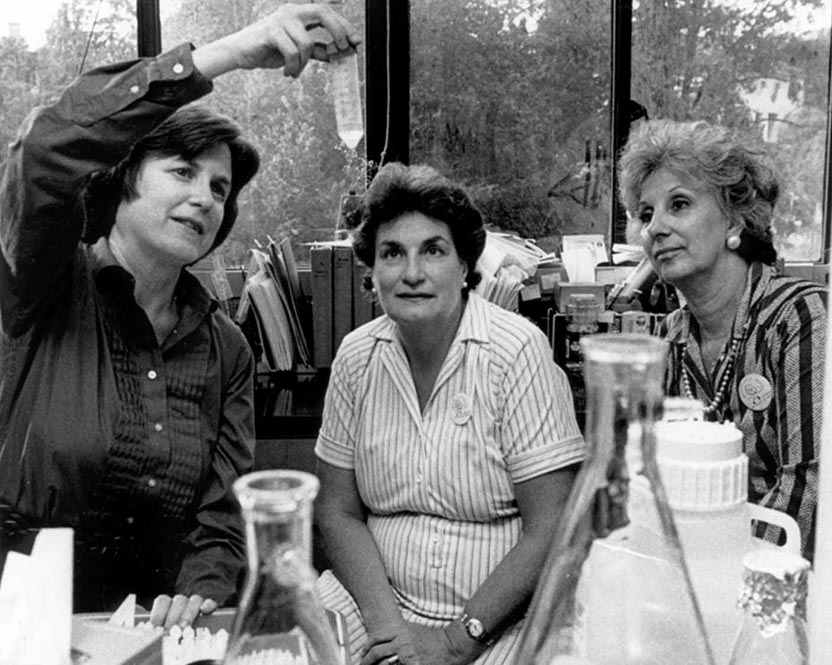
King (left) talks with Abuelas de Plaza de Mayo, Estella Carlotto (right) and Nelida Gomez (center), about developing genetic tests to reunite families with grandchildren who were kidnapped during the “Dirty Wars” in Argentina.
Image courtesy of The National Academies of Sciences, Engineering, and Medicine
In the early 1980s, she was asked by the American Association for the Advancement of Science to help a group of women in Argentina — the Abuelas de Plaza de Mayo — who proposed to use genetics to prove the identity of their grandchildren who were kidnapped as infants during the Argentinian military dictatorship of 1975–1983. King agreed. She was comfortable working in Latin America from her time in Chile, and many of the missing children were about the same age (nine) as her daughter, Emily. King made her first trip to Buenos Aires in 1984, beginning a 36-year effort that has reunited more than 130 families. To carry out the project, King developed a test based on mitochondrial DNA sequencing, which she used to unite families in Argentina and subsequently to identify victims of human rights abuses worldwide, as well as the remains of soldiers missing in action in all of America’s wars since World War II.
Help When She Needed It
King will always be grateful to the young woman to whom she owes the start of her career as an independent scientist. In 1975, King was given an interview for a faculty position at UC Berkeley — a fluke, as she puts it, due to then-new affirmative-action policies in the University of California system that required faculty search committees to justify not interviewing a female
or minority applicant. Despite King’s scientific record — her PhD dissertation was a cover article in Science — the committee was not eager to hire a young woman who was not a protégée of their small group. The senior (male) faculty member told King that they were “scraping the bottom of the barrel” in even considering her. But another new affirmative-action requirement mandated that the committee include a woman as a member, in this case graduate student Catherine Schaefer. Schaefer advocated fiercely for King, and she was offered a position. The senior male colleague became a supporter in the end, denying years later that he had ever made any disparaging remark. “I think he’d honestly forgotten,” says King now. Schaefer succeeded, as well, and is now a senior epidemiologist at Kaiser Permanente.
Over the years, King has worked hard to champion female scientists the way she had been championed by Schaefer. For young women entering careers in science, King says that the most critical element is “childcare, childcare, childcare,” which should be provided by the employer, high in quality, and subsidized.
A Partnership to Train Black Physician-Scientists
Shortly after King received the Lasker Award in 2014, she visited the Morehouse School of Medicine (MSM) as the guest of MSM president Valerie Montgomery Rice and Lasker president Claire Pomeroy, who is on the board of trustees of the historically Black medical school in Atlanta. At the end of her first day at MSM, King asked Montgomery Rice what she wanted most for her school. Without skipping a beat, Montgomery Rice said she wanted MSM to have one of the 50 prestigious US National Institutes of Health (NIH)-sponsored Medical Scientist Training Programs (MSTPs) that support training students in both the MD and the PhD. But with only a few research labs, MSM was not in a position to train medical students in fundamental research. “We looked at each other and said, ‘Let’s do it together’,” King recalls. It was the birth of the collaborative MSTP between MSM and the University of Washington (UW).
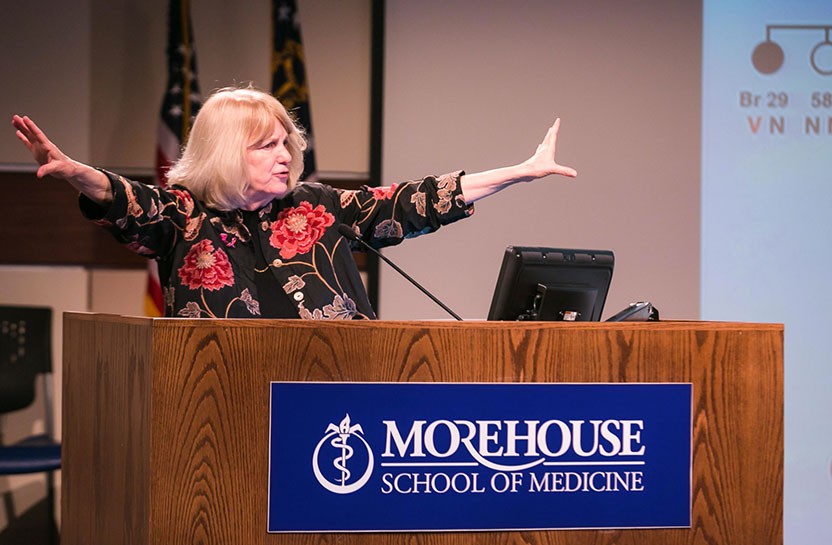
King speaks about biomedical research to students at Morehouse School of Medicine in 2016.
Image courtesy of Morehouse School of Medicine
In the collaborative program, MSM students complete their first two years of medical school at MSM in Atlanta, during which they can apply to study for the PhD at UW. Those accepted move to Seattle for their PhD (usually four years), then return to MSM for medical school years three and four. Like all MSTP students, those in the MSM-UW program are subsidized throughout their participation. The first student in the program, Miles Freeman, has completed his PhD at UW and his last year of medical school at MSM. Four other MSM students are presently carrying out their PhD research at UW. The program was able to get off the ground quickly because King put her Lasker Award money into it, and donors more than doubled the amount.
The goal, King notes, is for MSM to eventually have their own NIH-sponsored MSTP. But in the meantime, she says, “the partnership has been more rewarding than I could have imagined.” As one of the advisors for students during their time at UW, King remains very active in the program, which is expanding with opportunities for other medical students at the two schools to work together. As King puts it, “I’m watching and smiling as the next generation takes over.”
By Carina Storrs
